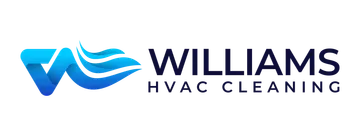- Service
Dryer Vent Cleaning
Dryer Vent Cleaning
Dryer vent cleaning is an important step in keeping your home safe and efficient. Over time, lint, dust, and debris can build up in the vent, causing poor airflow, longer drying times, and even fire risks. At Williams HVAC Cleaning, we use proper tools and techniques to clear out your dryer vent completely. This helps your dryer run better, saves energy, and protects your home. Let us handle the job and give you worry free drying every day.
Prevent Fire Risks
Lint buildup inside dryer vents is one of the leading causes of house fires. At Williams HVAC Cleaning, we focus on keeping your home safe with our reliable dryer vent cleaning service. Over time, dust, lint, and debris can clog the vent, causing your dryer to overheat and increasing the risk of a fire. Our team uses advanced tools to remove all blockages and restore proper airflow. By choosing regular cleanings, you reduce fire risks, lower energy usage, and help your dryer last longer. We also inspect the vent system for any hidden dangers or damage. Let us help you protect your home and loved ones with a cleaner, safer, and more efficient dryer vent system you can trust.
Moisture and lint buildup in dryer vents can create a breeding ground for bacteria, leading to unpleasant odors. Our disinfection process targets these bacteria, removing foul smells and improving airflow. By regularly disinfecting your vents, you ensure a cleaner, fresher home while enhancing the dryer’s performance and preventing further contamination.
Regularly cleaning your dryer vents is essential to maintaining a safe and efficient home. Over time, lint, dust, and debris can collect, blocking airflow and causing your dryer to overheat. Clean vents allow for smooth airflow, reducing fire risks and improving dryer performance, while ensuring your home remains safe and energy efficient.
Bacteria can thrive in damp, clogged dryer vents, leading to foul odors and poor air quality. By eliminating lint and moisture, you help stop bacteria growth. Our professional cleaning process kills harmful bacteria, leaving your vents clean and your air fresher. This helps improve your overall home hygiene and comfort.
Regular disinfection of your dryer vent lines is crucial for maintaining healthy indoor air. Bacteria, mold, and mildew can grow in unclean vents, which negatively impact the air quality in your home. Professional vent cleaning and disinfection ensure that your home stays safe, and that your dryer functions optimally for longer periods.
Mold and moisture buildup in dryer vents can lead to health risks and decreased dryer efficiency. Regular cleaning and maintenance prevent mold from forming, ensuring that your vents stay dry and clear. This helps reduce the risk of respiratory issues and improves the performance of your dryer, making it safer and more efficient.
Sanitizing your dryer vents is an effective way to improve air quality in your home. A clean vent system prevents bacteria, mold, and unpleasant odors from circulating throughout your living space. By maintaining fresh, sanitized vents, you create a healthier environment, ensuring that your home smells fresh and your air remains clean.
Proper airflow is essential for dryer efficiency and safety. Blocked or dirty vents can prevent air from circulating properly, causing your dryer to work harder. Regular cleaning and maintenance ensure that your vents stay clear and your dryer operates efficiently. This promotes healthy airflow, improves energy efficiency, and reduces the risk of fire hazards.
Monitor Airflow Changes with Professional Testing Equipment
Measure Flow
Measuring airflow is essential to ensure that your vent system is operating efficiently. By accurately measuring the airflow, you can detect blockages, obstructions, or leaks that may reduce system performance. This process helps improve ventilation and stop potential issues in the future.
Check Pressure
Checking the air pressure in your vents helps identify any irregularities in your system. Low pressure may indicate airflow restrictions, while high pressure could suggest blockages or improper vent settings. Regular pressure checks ensure your system runs smoothly and efficiently, avoiding costly repairs later.
Test Performance
Testing the performance of your HVAC system ensures it’s functioning at its best. This includes checking airflow, temperature control, and energy efficiency. Regular performance testing helps identify potential issues early, ensuring your system delivers optimal comfort while reducing energy consumption and increasing longevity.
Test Air Leaks
Testing for air leaks is vital to maintaining energy efficiency. Leaks in your ducts can lead to wasted energy, higher utility bills, and poor airflow. Sealing any detected leaks ensures your system works more efficiently, saving energy and improving air quality in your home.
Inspect Air Channels
Inspecting the air channels in your system is crucial for maintaining healthy airflow. Blocked or dirty air channels can hinder proper ventilation, reducing efficiency and air quality. Regular inspections allow you to clear any debris and ensure that air moves freely throughout your home.
Air Intake Check
Checking the air intake ensures that your HVAC system is receiving average airflow for optimal performance. Obstructions or blockages at the intake can reduce system efficiency and air quality. Regular checks help maintain healthy airflow and improve the system’s ability to regulate temperature and humidity effectively.
Identify Strange Noises
Strange noises coming from your dryer vent can indicate airflow issues or blockages. Listen carefully to any rattling, buzzing, or howling sounds, as these may signal that something is obstructing the vent or the airflow.
Inspect for Blockages
Blockages in your dryer vent can cause inefficient drying and increase fire hazards. Regularly inspect your vent for any obstructions such as lint buildup or foreign objects, ensuring the airflow remains unrestricted and the system operates safely.
Listen Carefully
Listening carefully to your dryer vent is essential for detecting potential issues. If you hear unusual sounds, such as whistling or clunking, it could indicate a problem like a clogged vent or a faulty vent hose that needs attention.
